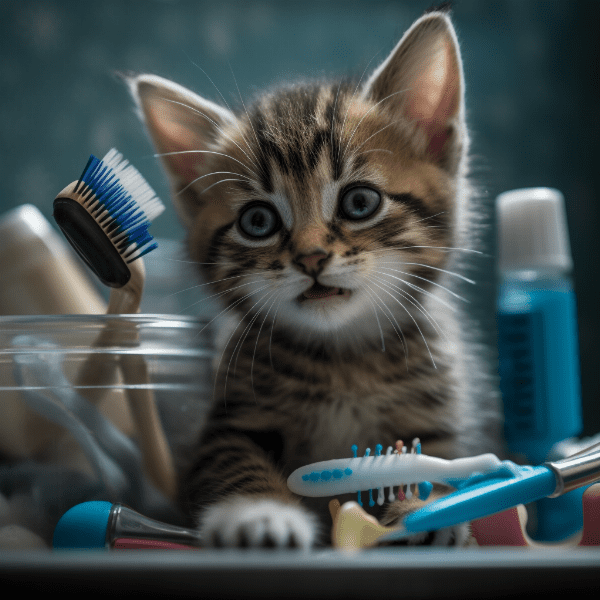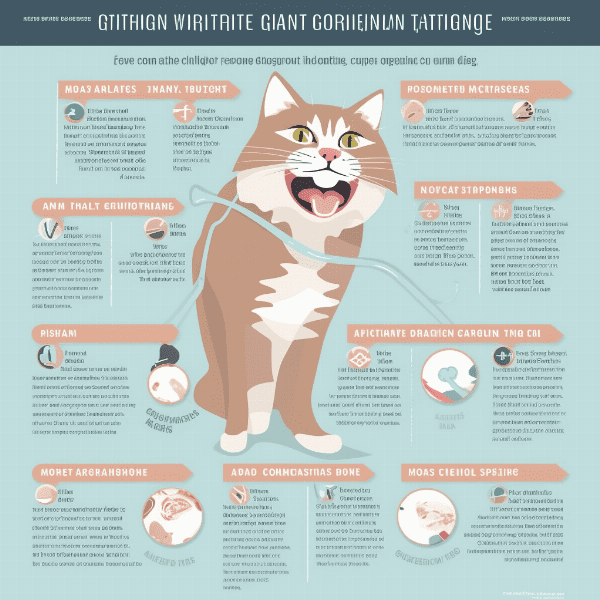Table of Contents
- What is Feline Tooth Resorption?
- Prevalence and Risk Factors
- Signs and Symptoms to Watch For
- Diagnosing Feline Tooth Resorption
- Different Stages of Tooth Resorption
- Traditional Treatments for Tooth Resorption
- Advanced Treatments for Tooth Resorption
- Preventing Tooth Resorption in Cats
- Home Care for Cats with Tooth Resorption
- When to Consult a Veterinary Professional
What is Feline Tooth Resorption?
Feline tooth resorption (TR), also known as feline odontoclastic resorptive lesions (FORLs), is a common dental condition in cats that can cause severe pain and discomfort. It is a process in which a cat’s body begins to dissolve and destroy the hard tissues of the teeth, including the enamel, dentin, and cementum. TR can affect any of a cat’s teeth, but it most commonly occurs in the premolars and molars.
How Does Feline Tooth Resorption Develop?
The exact causes of feline tooth resorption are still unknown, but research suggests that several factors may contribute to its development. Some studies suggest that genetics may play a role, while others point to chronic inflammation or autoimmune responses as possible causes. Poor dental hygiene, a diet high in carbohydrates, and certain viral infections may also increase a cat’s risk of developing TR.
What Are the Symptoms of Feline Tooth Resorption?
The symptoms of feline tooth resorption can be subtle and difficult to detect, especially in the early stages of the condition. However, some common signs to watch for include:
- Discolored or broken teeth
- Sensitivity or pain when eating or chewing
- Drooling or excessive salivation
- Bleeding or inflammation of the gums
- Reluctance to eat or groom
- Behavioral changes, such as increased irritability or lethargy
How Is Feline Tooth Resorption Diagnosed?
If you suspect that your cat may be suffering from tooth resorption, it is important to bring them to a veterinary professional for an examination. During the exam, the veterinarian will examine your cat’s teeth and gums and may take X-rays to evaluate the extent of the damage. In some cases, a biopsy or other diagnostic tests may be necessary to confirm the diagnosis and rule out other dental conditions.
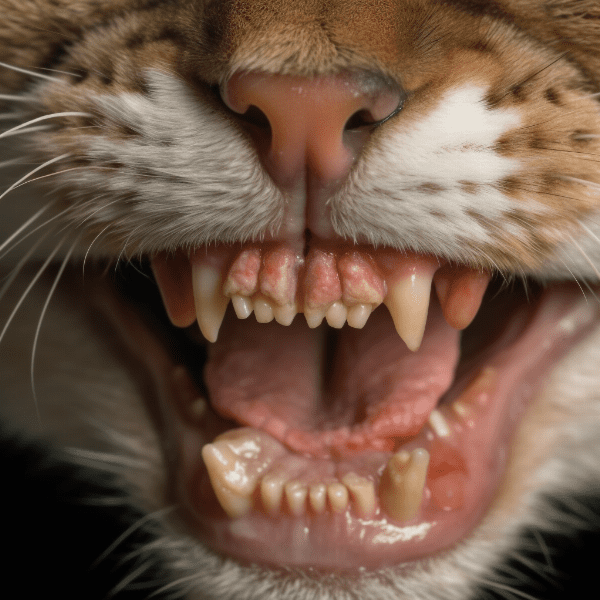
Prevalence and Risk Factors
Feline tooth resorption is a common dental condition in cats, with studies estimating that up to 60% of cats over the age of six are affected by the condition. However, the actual prevalence of TR may be even higher, as many cases go undiagnosed due to the subtle nature of the symptoms.
Age and Breed as Risk Factors
One of the most significant risk factors for feline tooth resorption is age. Cats over the age of six are more likely to develop TR than younger cats, and the risk increases with age. Additionally, certain breeds of cats may be more prone to developing TR, including Siamese, Abyssinians, and Persians.
Other Risk Factors for Feline Tooth Resorption
While age and breed are significant risk factors for feline tooth resorption, other factors may also contribute to the development of the condition. Poor dental hygiene, for example, can increase the risk of developing TR, as can a diet high in carbohydrates or low in essential nutrients. Additionally, viral infections, such as feline immunodeficiency virus (FIV) or feline leukemia virus (FeLV), may increase the risk of TR in cats.
Conclusion
Understanding the prevalence and risk factors associated with feline tooth resorption can help cat owners take steps to prevent or manage the condition. Regular dental checkups, proper dental hygiene, and a balanced diet can all help reduce the risk of TR in cats. If you suspect that your cat may be at risk for developing TR, talk to your veterinary professional about steps you can take to help protect your cat’s oral health.
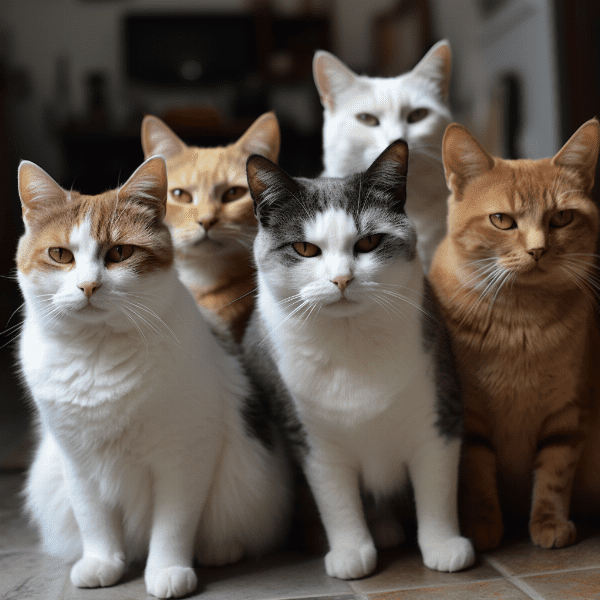
Signs and Symptoms to Watch For
Feline tooth resorption can be a difficult condition to diagnose, as the symptoms can be subtle and vary from cat to cat. However, being aware of the signs and symptoms of TR can help cat owners detect the condition early and seek appropriate veterinary care.
Oral Symptoms
Several oral symptoms may also indicate feline tooth resorption. These may include:
- Swollen or bleeding gums
- Bad breath
- Loose or missing teeth
- Discoloration or darkening of the teeth
Other Symptoms
In some cases, feline tooth resorption may also lead to other symptoms, such as weight loss or a decline in overall health. However, these symptoms may be more difficult to attribute specifically to TR and may require a more thorough veterinary examination.
Conclusion
Feline tooth resorption can be a challenging condition to diagnose, but being aware of the signs and symptoms can help cat owners seek appropriate veterinary care and prevent the condition from progressing. If you notice any changes in your cat’s eating habits, behavior, or oral health, don’t hesitate to consult with your veterinary professional for an examination and appropriate treatment.
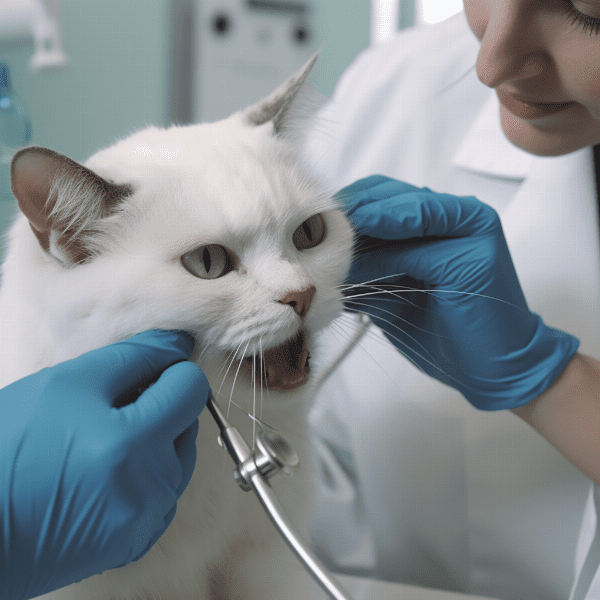
Diagnosing Feline Tooth Resorption
Diagnosing feline tooth resorption can be challenging, as the condition can be difficult to detect in its early stages. However, there are several diagnostic tools and techniques that veterinary professionals can use to identify TR and develop an appropriate treatment plan.
Physical Examination
The first step in diagnosing feline tooth resorption is a physical examination of the cat’s teeth and gums. The veterinary professional will inspect the teeth and gums for signs of damage or inflammation, such as bleeding, swelling, or discoloration. They may also palpate the teeth and gums to check for sensitivity or pain.
Dental Radiographs
Dental radiographs, or X-rays, are an essential diagnostic tool in identifying feline tooth resorption. X-rays can reveal the extent of damage to the tooth and help identify the location of the resorptive lesions. This information can help the veterinary professional develop an appropriate treatment plan and determine the best course of action for the affected teeth.
Biopsy or Histopathology
In some cases, a biopsy or histopathology may be necessary to confirm a diagnosis of feline tooth resorption. A biopsy involves removing a small sample of tissue from the affected tooth and examining it under a microscope. Histopathology, or the study of tissue changes, can help identify the specific type of TR affecting the tooth and guide treatment decisions.
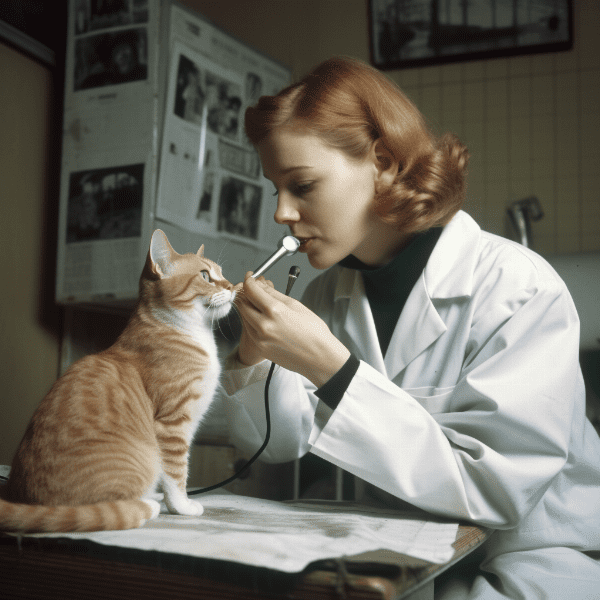
Different Stages of Tooth Resorption
Feline tooth resorption is a progressive condition that can occur in several stages. Identifying the stage of TR can be important in determining the appropriate treatment options and improving the overall prognosis for the affected tooth.
Stage 1: Early Lesions
In the early stages of tooth resorption, small lesions begin to form on the surface of the tooth. These lesions may appear as a small pinkish spot or a tiny hole in the enamel. At this stage, the tooth may still appear relatively normal, and it may be difficult to detect without dental radiographs.
Stage 2: Moderate Lesions
As the condition progresses, the resorptive lesions begin to deepen and spread into the dentin layer of the tooth. At this stage, the tooth may become discolored or appear eroded, and it may be sensitive to touch or pressure. Dental radiographs are usually necessary to diagnose moderate TR.
Stage 3: Advanced Lesions
In advanced stages of feline tooth resorption, the lesions may extend deep into the tooth’s pulp, causing severe pain and discomfort for the cat. The tooth may become loose, and the surrounding gum tissue may become inflamed and swollen. Dental radiographs can confirm the extent of the damage and help determine the best course of action for the affected tooth.
Stage 4: End-Stage Lesions
In the end stages of tooth resorption, the tooth may become severely damaged or infected, making it impossible to save. At this point, the best course of action may be to extract the tooth to relieve the cat’s pain and prevent further damage to surrounding teeth.
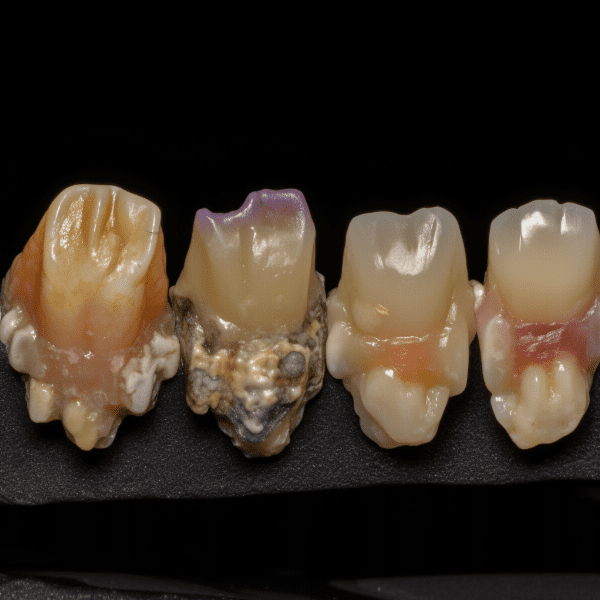
Traditional Treatments for Tooth Resorption
Feline tooth resorption is a challenging condition to treat, and the appropriate treatment options may vary depending on the stage and severity of the resorptive lesions. Here are some traditional treatment options that may be considered for cats with TR:
Dental Extraction
In cases where the tooth is severely damaged or infected, extraction may be the best course of action. This involves removing the affected tooth under anesthesia to relieve the cat’s pain and prevent further damage to surrounding teeth. In some cases, multiple extractions may be necessary to address multiple affected teeth.
Root Canal Therapy
Root canal therapy may be a viable option for cats with tooth resorption in the early stages or moderate stages. This involves removing the damaged or infected tissue from the tooth and filling the canal with a biocompatible material. This treatment can help preserve the tooth’s structure and function while relieving the cat’s pain.
Crown Amputation
Crown amputation is another option for cats with tooth resorption in the early to moderate stages. This involves removing the crown of the affected tooth while leaving the root intact. This treatment can help preserve the tooth’s root and support the surrounding teeth, but it may not be appropriate for all cases of TR.
Scaling and Polishing
In some cases, scaling and polishing may be recommended to remove plaque and tartar buildup on the teeth and help prevent further damage to the affected teeth. This treatment is often used in conjunction with other traditional treatments to improve the overall outcome.
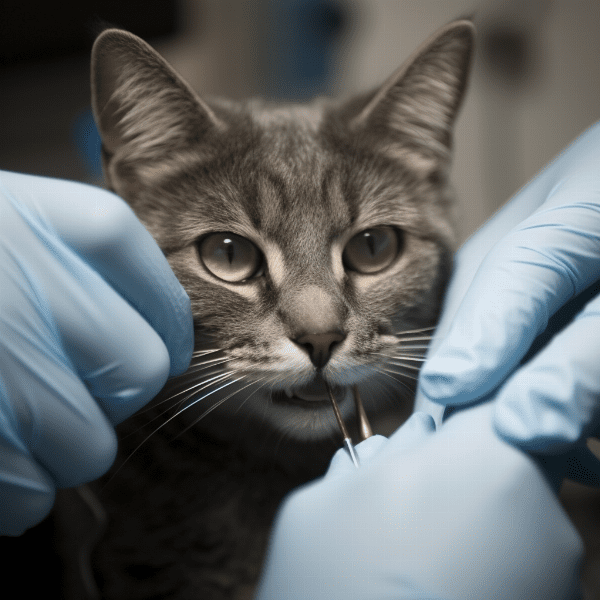
Advanced Treatments for Tooth Resorption
In addition to traditional treatments, several advanced treatment options may be considered for cats with feline tooth resorption. These treatments may be appropriate for cats with more advanced stages of TR or cases where traditional treatments have been unsuccessful.
Orthodontic Extrusion
Orthodontic extrusion is a specialized technique that involves repositioning the affected tooth using orthodontic devices. This treatment can help preserve the tooth’s root and structure while removing the damaged portion of the tooth. Orthodontic extrusion may be appropriate for cats with moderate to advanced stages of TR.
Guided Tissue Regeneration
Guided tissue regeneration is a technique that involves using specialized membranes or grafts to help stimulate the growth of new tissue around the affected tooth. This treatment can help preserve the tooth’s structure and function while promoting healing and regeneration of the surrounding tissues.
Bonding and Restoration
Bonding and restoration involve using specialized materials to repair and restore the affected tooth’s structure and function. This treatment may be appropriate for cats with early to moderate stages of TR and can help preserve the tooth’s structure while relieving the cat’s pain and discomfort.
Laser Therapy
Laser therapy is a non-invasive treatment that uses specialized lasers to promote healing and reduce pain and inflammation. This treatment may be appropriate for cats with early to moderate stages of TR and can help reduce the severity of symptoms while promoting healing of the affected tooth and surrounding tissues.
Conclusion
Advanced treatments for feline tooth resorption can offer effective options for cats with more advanced stages of TR or cases where traditional treatments have been unsuccessful. By working with a veterinary professional who is experienced in diagnosing and treating TR, cat owners can help ensure that their cats receive the appropriate care and treatment for this condition. If you suspect that your cat may be suffering from tooth resorption, don’t hesitate to reach out to your veterinary professional for help.

Preventing Tooth Resorption in Cats
Preventing feline tooth resorption can be challenging, but there are several steps that cat owners can take to help reduce the risk of TR and promote good dental health for their cats.
Regular Dental Checkups
Regular dental checkups are essential for identifying potential dental problems early, including tooth resorption. Cats should have a dental examination at least once a year, and more frequent checkups may be necessary for older cats or those at higher risk of dental problems.
Balanced Diet
A balanced diet is essential in promoting good dental health for cats. A diet high in carbohydrates or lacking essential nutrients can increase the risk of dental problems, including tooth resorption. Choosing high-quality cat food that is appropriate for your cat’s age, breed, and health status can help promote good dental health.
Viral Infection Prevention
Preventing viral infections, such as feline immunodeficiency virus (FIV) or feline leukemia virus (FeLV), can also help reduce the risk of feline tooth resorption. Cat owners should ensure that their cats are up-to-date on their vaccinations and take appropriate precautions to prevent exposure to infected cats.
Conclusion
Preventing feline tooth resorption requires a combination of regular dental checkups, proper dental hygiene, a balanced diet, and preventative measures to reduce the risk of viral infections. By working with a veterinary professional who is experienced in promoting good dental health, cat owners can help ensure that their cats maintain healthy teeth and gums throughout their lives. If you suspect that your cat may be at risk for developing tooth resorption, don’t hesitate to reach out to your veterinary professional for advice and guidance.
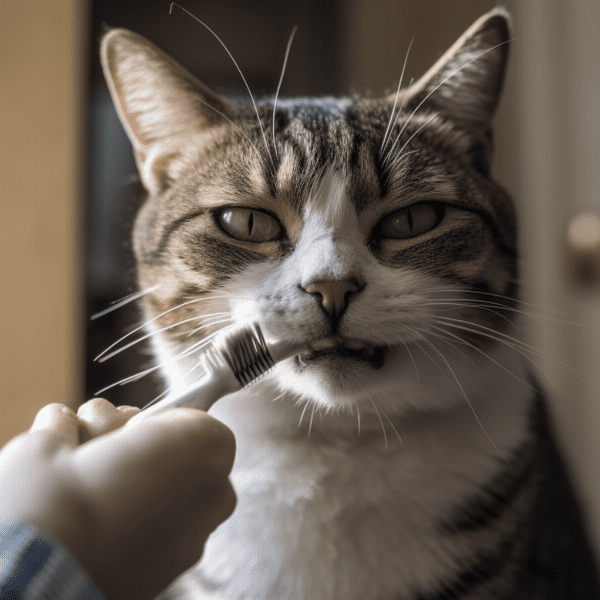
Home Care for Cats with Tooth Resorption
Home care is an essential part of managing feline tooth resorption and ensuring the best possible outcome for cats with this condition. Here are some tips for caring for cats with tooth resorption at home:
Pain Management
Cats with tooth resorption may experience significant pain and discomfort, especially in more advanced stages of the condition. Pain management is an essential aspect of home care for these cats and may involve medications prescribed by a veterinary professional to manage pain and reduce inflammation.
Dental Hygiene
Proper dental hygiene is crucial in managing feline tooth resorption and preventing further damage to the affected teeth. Brushing your cat’s teeth regularly with a pet-friendly toothpaste and toothbrush can help remove plaque and tartar buildup and promote good dental health. Dental chews or treats may also be recommended by your veterinary professional.
Soft Food
Cats with tooth resorption may experience pain or discomfort when eating hard or crunchy foods. Switching to a soft food diet can help make eating more comfortable for cats with TR and reduce the risk of further damage to the affected teeth.
Follow-Up Care
Regular follow-up care with a veterinary professional is essential in managing feline tooth resorption. This may involve regular dental checkups, monitoring the progression of the condition, and adjusting treatment plans as necessary.
Conclusion
Home care is an essential aspect of managing feline tooth resorption and ensuring the best possible outcome for cats with this condition. By working with a veterinary professional and implementing a comprehensive home care plan, cat owners can help manage pain and discomfort, promote good dental health, and reduce the risk of further damage to the affected teeth. If you suspect that your cat may be suffering from tooth resorption, don’t hesitate to reach out to your veterinary professional for help and guidance on managing this condition at home.

When to Consult a Veterinary Professional
Feline tooth resorption is a painful and potentially serious dental condition that requires prompt attention and appropriate treatment. Here are some signs that may indicate that it’s time to consult a veterinary professional:
Changes in Eating Habits
Cats with tooth resorption may experience pain or discomfort when eating, leading to changes in their eating habits. If you notice that your cat is eating less, avoiding certain types of food, or showing signs of discomfort when eating, it may be time to consult a veterinary professional.
Changes in Behavior
Cats with tooth resorption may also experience changes in their behavior, such as increased irritability, lethargy, or reluctance to play or interact with their owners. These changes may be due to pain or discomfort associated with TR and may warrant a visit to a veterinary professional.
Changes in Appearance
Changes in the appearance of the teeth or gums may also indicate that it’s time to consult a veterinary professional. Look for signs of discoloration, swelling, bleeding, or erosion of the teeth or gums, as these may be signs of tooth resorption or other dental problems.
Foul Odor
Foul odor from the mouth may be a sign of dental problems, including tooth resorption. If you notice a foul odor coming from your cat’s mouth, it may be time to consult a veterinary professional for an evaluation.
Conclusion
Feline tooth resorption is a painful and potentially serious dental condition that requires prompt attention and appropriate treatment. By staying vigilant and monitoring for signs of TR, cat owners can help ensure that their cats receive the appropriate care and treatment for this condition. If you suspect that your cat may be suffering from tooth resorption, don’t hesitate to reach out to your veterinary professional for help and guidance on managing this condition.


